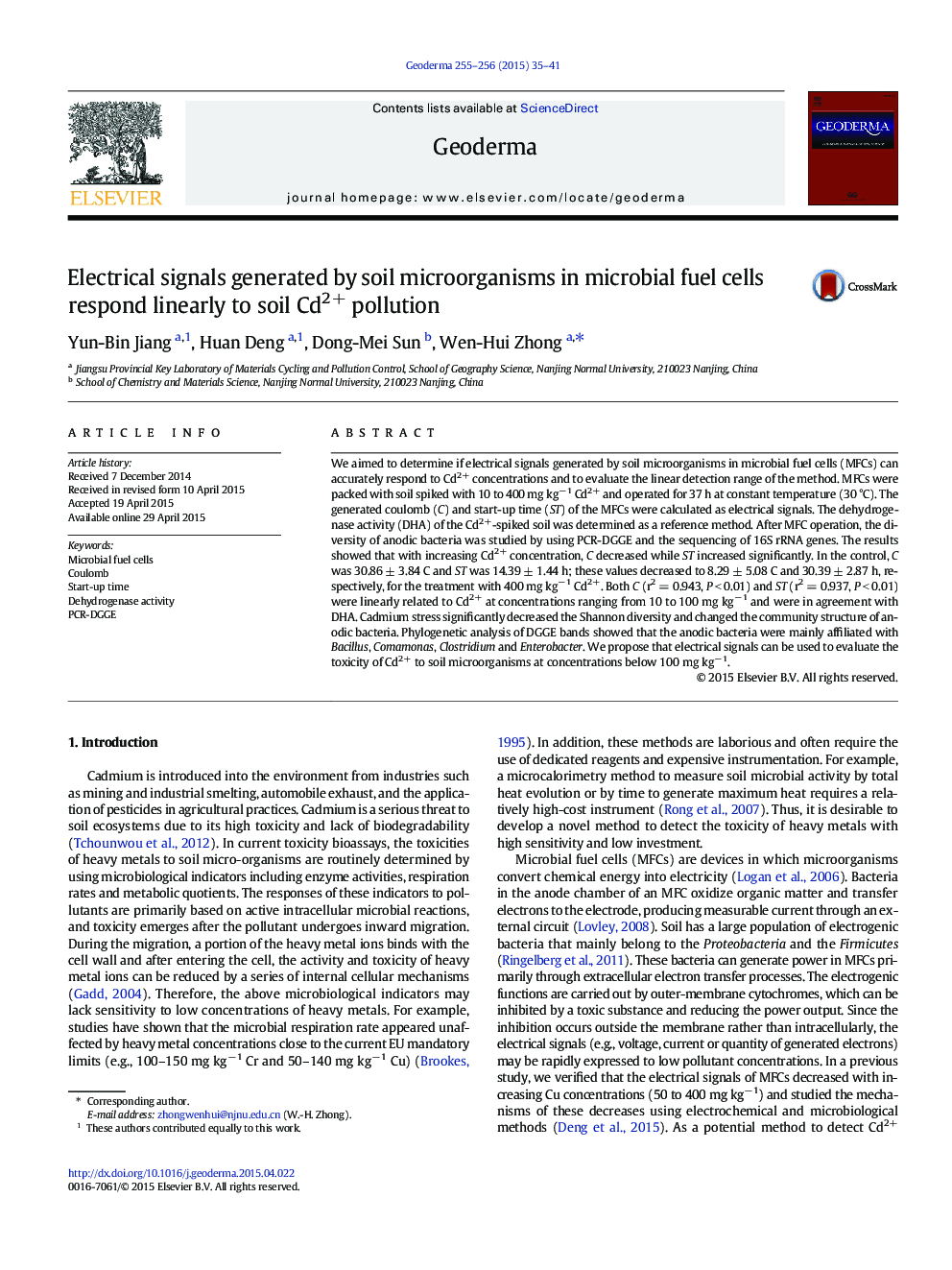| Article ID | Journal | Published Year | Pages | File Type |
|---|---|---|---|---|
| 4573143 | Geoderma | 2015 | 7 Pages |
•Microbial fuel cells can be used to detect toxicity of Cd2 + on soil microorganisms.•Electric signals correlate with Cd2 + concentration in the range of 10 to 100 mg kg− 1.•Cadmium changed the community diversity and composition of anodic bacteria.
We aimed to determine if electrical signals generated by soil microorganisms in microbial fuel cells (MFCs) can accurately respond to Cd2+ concentrations and to evaluate the linear detection range of the method. MFCs were packed with soil spiked with 10 to 400 mg kg− 1 Cd2+ and operated for 37 h at constant temperature (30 °C). The generated coulomb (C) and start-up time (ST) of the MFCs were calculated as electrical signals. The dehydrogenase activity (DHA) of the Cd2+-spiked soil was determined as a reference method. After MFC operation, the diversity of anodic bacteria was studied by using PCR-DGGE and the sequencing of 16S rRNA genes. The results showed that with increasing Cd2+ concentration, C decreased while ST increased significantly. In the control, C was 30.86 ± 3.84 C and ST was 14.39 ± 1.44 h; these values decreased to 8.29 ± 5.08 C and 30.39 ± 2.87 h, respectively, for the treatment with 400 mg kg− 1 Cd2 +. Both C (r2 = 0.943, P < 0.01) and ST (r2 = 0.937, P < 0.01) were linearly related to Cd2+ at concentrations ranging from 10 to 100 mg kg− 1 and were in agreement with DHA. Cadmium stress significantly decreased the Shannon diversity and changed the community structure of anodic bacteria. Phylogenetic analysis of DGGE bands showed that the anodic bacteria were mainly affiliated with Bacillus, Comamonas, Clostridium and Enterobacter. We propose that electrical signals can be used to evaluate the toxicity of Cd2+ to soil microorganisms at concentrations below 100 mg kg− 1.
